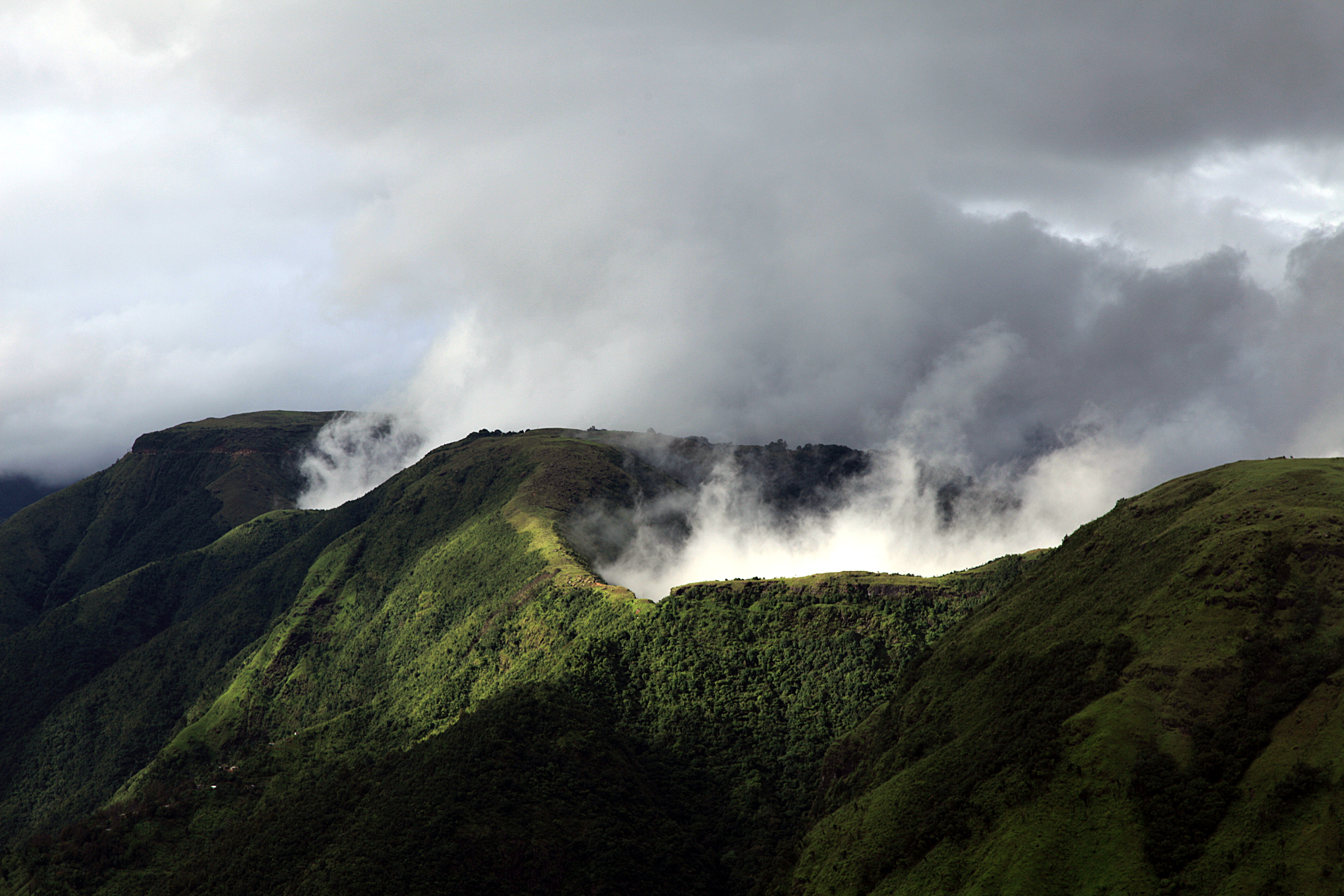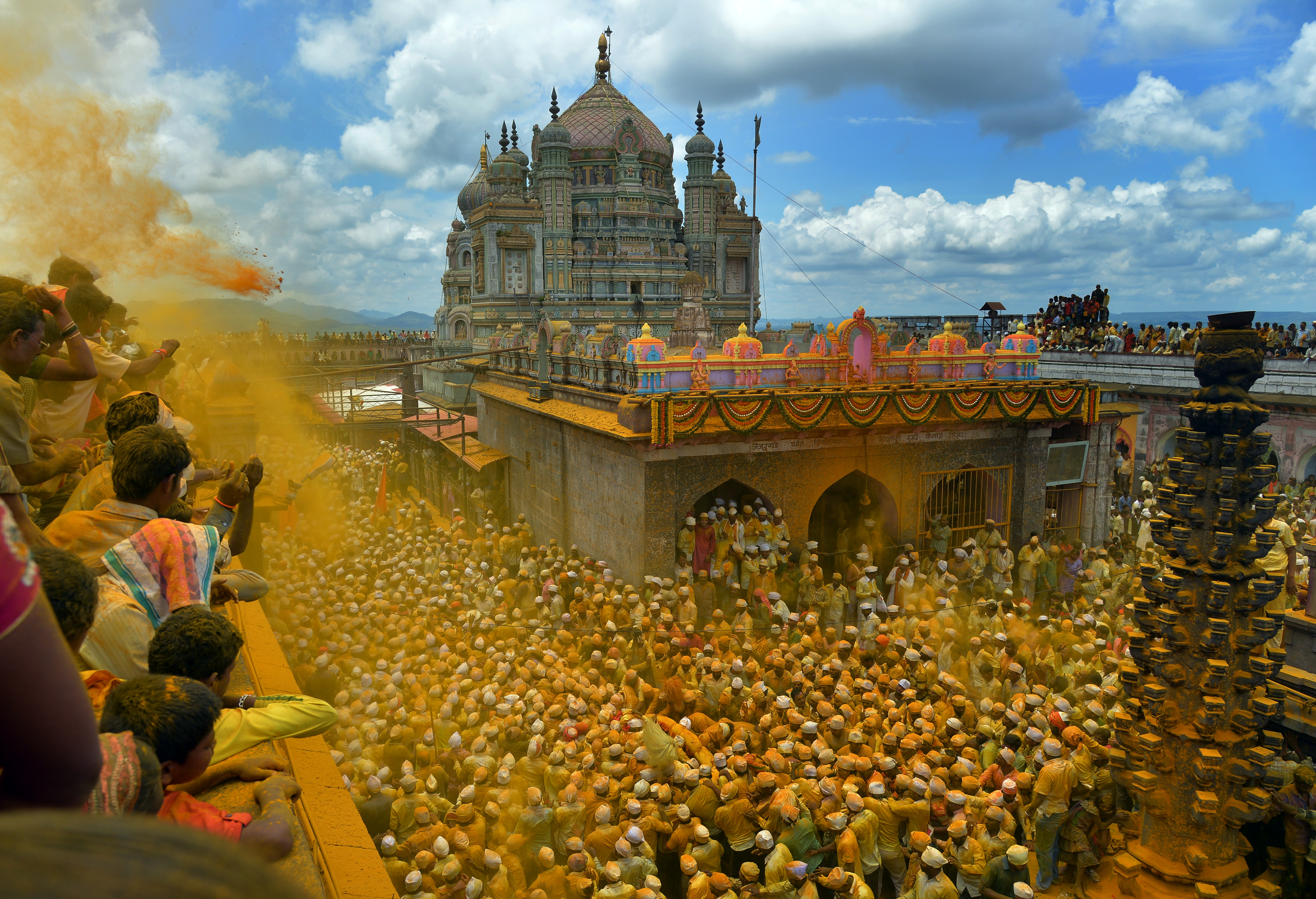|
Lakadong Turmeric
Lakadong turmeric is a variety of turmeric mainly grown in the Indian state of Meghalaya. It is a common and widely cultivated crop in the Lakadong area of the Jaintia Hills districts. Approximately 14,000 farmers from 43 villages in the Lakadong area cultivate this variety of turmeric on 1,753 hectares of land. Under its Geographical Indication tag, it is referred to as "Lakadong Turmeric". Name The name "Lakadong" refers to the village of cultivation, where it is the major produce. "Shynrai Lakadong" in Khasi language and "Chyrmit Lakadong" in Pnar language are the local names for Lakadong turmeric. Description Trinity Saioo, a Lakadong agriculturist and former school teacher, received the prestigious Padma Shri award from the Government of India in 2021 for promoting the cultivation of Lakadong turmeric among farmers in the state. Lakadong turmeric is considered of one of the world's best varieties with a high curcumin content of 6.8-7.5% and a darker color. It is grown ... [...More Info...] [...Related Items...] OR: [Wikipedia] [Google] [Baidu] |
Meghalaya
Meghalaya (; "the abode of clouds") is a states and union territories of India, state in northeast India. Its capital is Shillong. Meghalaya was formed on 21 January 1972 by carving out two districts from the Assam: the United Khasi Hills and Jaintia Hills and the Garo Hills.History of Meghalaya State Government of India The estimated population of Meghalaya in 2014 was 3,211,474. Meghalaya covers an area of approximately 22,429 square kilometres, with a length-to-breadth ratio of about 3:1.Meghalaya IBEF, India (2013) The state is bound to the south by the Bangladeshi divisions of Mymensingh Division, Mymensingh and Sylhet Division, Sylhet, to the west by the Bangladeshi ... [...More Info...] [...Related Items...] OR: [Wikipedia] [Google] [Baidu] |
Jowai
Jowai (IPA: ʤəʊˈwaɪ) is the headquarters of the West Jaintia Hills district of the state of Meghalaya, India, and is home to the Pnar, a sub-tribe of the Khasi people. It is located on a plateau surrounded on three sides by the Myntdu river bordering Bangladesh to the south (about 50 km from the Indo-Bangladesh border). Due to its high altitude of 1365 m above sea level, Jowai experiences warm summers with cool to chilly winters. Jowai is an important business and education hub for the entire district, catering to local students as well as those from the adjacent parts of Assam and Bangladesh. It is well equipped with infrastructure including schools, colleges, hospitals, and a postal service. As with the Nongphlang (Khynriams), Pnars too have a matriarchal society where daughters inherit the family property. Connectivity Jowai is well connected by roadways to Shillong, which i64 km away. The town of Jowai lies on National Highway 44 (NH 44) which connects A ... [...More Info...] [...Related Items...] OR: [Wikipedia] [Google] [Baidu] |
Turmeric Production In India
Turmeric (), or ''Curcuma longa'' (), is a flowering plant in the ginger family Zingiberaceae. It is a perennial, rhizomatous, herbaceous plant native to the Indian subcontinent and Southeast Asia that requires temperatures between and high annual rainfall to thrive. Plants are gathered each year for their rhizomes, some for propagation in the following season and some for consumption or dyeing. The rhizomes can be used fresh, but they are often boiled in water and dried, after which they are ground into a deep orange-yellow shelf-stable spice powder commonly used as a coloring and flavoring agent in many Asian cuisines, especially for curries (curry powder). Turmeric powder has a warm, bitter, black pepper-like flavor and earthy, mustard-like aroma. Although long used in Ayurvedic medicine, there is no high-quality clinical evidence that consuming turmeric or the principal turmeric constituent, curcumin, is effective for treating any disease. Curcumin, a bright yellow che ... [...More Info...] [...Related Items...] OR: [Wikipedia] [Google] [Baidu] |
GI Tagged Turmeric Varieties Of India
GI or Gi may refer to: Military * G.I., a nickname for U.S. Army soldiers Arts and entertainment * ''GI'' (album), an album by the Germs * Gi (''Captain Planet'' character) * ''Game Informer'', a magazine * ''Gert's Inferno'', a comic book series * Global Icon (band), a South Korean group * ''Genshin Impact'', an action role-playing gacha game developed by miHoYo Organisations * General Instrument, an electronics company * Gesellschaft für Informatik, a German computer society * Goethe-Institut, a German cultural association * Guaranteed Irish, a business membership network * Gymnastics Ireland, a governing body; see Sport in Ireland § Gymnastics Science and technology * GI, a complexity class in the graph isomorphism problem * Galvanized iron Biology and medicine * Gi alpha subunit, a protein * Gastrointestinal tract (GI tract) * Gigantocellular reticular nucleus, a subregion of the medullary reticular formation * Glycemic index, measuring a food's effect on blood gluc ... [...More Info...] [...Related Items...] OR: [Wikipedia] [Google] [Baidu] |
Indian Cuisine
Indian cuisine consists of a variety of regional and traditional cuisines native to the Indian subcontinent. Given the diversity in soil, climate, culture, ethnic groups, and occupations, these cuisines vary substantially and use locally available spices, herbs, vegetables, and fruits. Indian food is also heavily influenced by religion, in particular Hinduism and Islam, cultural choices and traditions. Historical events such as invasions, trade relations, and colonialism have played a role in introducing certain foods to India. The Columbian exchange, Columbian discovery of the New World brought a number of new vegetables and fruits. A number of these such as potatoes, tomatoes, Chili pepper, chillies, peanuts, and guava have become staples in many regions of India. Indian cuisine has shaped the history of international relations; the spice trade between India and Europe was the primary catalyst for Europe's Age of Discovery. Spices were bought from India and traded around ... [...More Info...] [...Related Items...] OR: [Wikipedia] [Google] [Baidu] |
Kandhamal Haladi
Kandhamal Haladi is an indigenous variety of turmeric mainly grown in the State of India, Indian State of Odisha. It is a common and widely cultivated crop in the Khajuripada, Phulbani, Phiringia, Tikabali, Chakapad, G. Udayagiri, G.Udayagiri, Raikia, K. Nuagaon, Baliguda, Tumudibandha, Kotagarh and Daringbadi tehsils of the Kandhamal district, Kandhamal district, mainly by the indigenous Khonds, Kondh community. Under its Geographical Indications in India, Geographical Indication tag, it is referred to as "Kandhamal Haladi". Name Kandhamal Haladi is a prized crop in Kandhamal and so named after the district. The word "Haladi" means "Turmeric" in the state language of Odia language, Odia. Description According to L.S.S. O'Malley's "Annual District Gazetteers" (1908), turmeric has been cultivated by tribal farmers in the region since ancient times. Cultivated by over 60,000 families (roughly 50% of the district's population), Kandhamal Haldi is inherently organic. Its distinctiv ... [...More Info...] [...Related Items...] OR: [Wikipedia] [Google] [Baidu] |
Waigaon Turmeric
Waigaon Turmeric is a variety of Turmeric mainly grown in the Indian state of Maharashtra. It is a common and widely cultivated crop in the village of Waigaon located in Samudrapur taluka of Wardha district. It is also grown in other villages of Samudrapur taluka, including Muradpur, Pawangaon, Mangrul, and Dongargaon. Under its Geographical Indication tag, it is referred to as "Waigaon Turmeric". Name Waigaon Turmeric is a prized crop in Waigaon village with approximately 80% farmers cultivating this turmeric variety and so named after it. Trivia The village is named as "Haladya Waigaon" or "Waigaon Haldya" ("Halad" means turmeric in the local state language of Marathi), reflecting its reputation as a premier hub for cultivating unique and high-quality turmeric. Local name It is known locally as Waigaon Halad (वायगावची हळद). Description Waigaon Turmeric is distinct in its characteristics, having a dark mustard yellow color that sets it apart from other ... [...More Info...] [...Related Items...] OR: [Wikipedia] [Google] [Baidu] |
Vasmat Haldi
Vasmat Haldi is a variety of turmeric mainly grown in the Indian state of Maharashtra. It is a common and widely cultivated crop in Hingoli district of the Marathwada region of Maharashtra. Turmeric cultivation is prominent in the districts of Hingoli, Parbhani, Nanded, Washim and Akola. Hingoli district has the largest area under turmeric cultivation in this region. Under its Geographical Indication tag, it is referred to as "Vasmat Haldi (Turmeric)". Name Vasmat Haldi वसमत हळद is a prized crop in Basmath taluka of Hingoli district, due to its extensive production of turmeric and so named after it. ("Halad" or "Haldi" means turmeric in the local state language of Marathi). Vasmath or Basmath or Vasmat are variations of the same name. Description Vasmat Haldi, also known as turmeric, has a unique property of imparting flavor and color due to the presence of curcumin. Its quality, taste, texture, aroma, and color, along with its durability, make it distinct. The c ... [...More Info...] [...Related Items...] OR: [Wikipedia] [Google] [Baidu] |
Sangli Turmeric
Sangli turmeric is a variety of turmeric mainly grown in the Indian state of Maharashtra. It is a common and widely cultivated crop in Sangli district. Turmeric cultivation is prominent in the southern region of Sangli, specifically in the areas of Miraj, Tasgaon, Palus, Kadegaon, Walwa, Vita, Khanapur, and Chinchali. Sangli accounts for nearly 70 per cent of the state’s total production and stands as the premier trading hub for turmeric in Asia, and possibly globally. The district has garnered the nickname "Saffron City" due to its strong association with turmeric. Under its Geographical Indication tag, it is referred to as "Sangli Turmeric". Name Sangli turmeric is a prized crop in Sangli district and so named after it, with Sangli earning the reputation as the "Turmeric City" due to its extensive production of turmeric. Local name It is known locally as Sanglichi Halad (सांगलीची हळद). "Halad" means turmeric in the local state language of Marathi. ... [...More Info...] [...Related Items...] OR: [Wikipedia] [Google] [Baidu] |
Chennai
Chennai, also known as Madras (List of renamed places in India#Tamil Nadu, its official name until 1996), is the capital city, capital and List of cities in Tamil Nadu by population, largest city of Tamil Nadu, the southernmost states and territories of India, state of India. It is located on the Coromandel Coast of the Bay of Bengal. According to the 2011 Census of India, 2011 Indian census, Chennai is the List of most populous cities in India, sixth-most-populous city in India and forms the List of million-plus urban agglomerations in India, fourth-most-populous urban agglomeration. Incorporated in 1688, the Greater Chennai Corporation is the oldest municipal corporation in India and the second oldest in the world after City of London Corporation, London. Historically, the region was part of the Chola dynasty, Chola, Pandya dynasty, Pandya, Pallava dynasty, Pallava and Vijayanagara Empire, Vijayanagara kingdoms during various eras. The coastal land which then contained th ... [...More Info...] [...Related Items...] OR: [Wikipedia] [Google] [Baidu] |
Geographical Indication Registry (India)
The Office of the Controller General of Patents, Designs and Trade Marks (CGPDTM) generally known as the Indian Patent Office, is an agency under the Department for Promotion of Industry and Internal Trade which administers the Indian law of Patents, Designs and Trade Marks. History Foundation On 28 February 1856, the Government of India promulgated legislation to grant what was then termed as "exclusive privileges for the encouragement of inventions of new manufactures". On 3 March 1856, a civil engineer, George Alfred DePenning of 7, Grant's Lane, Calcutta petitioned the Government of India for grant of exclusive privileges for his invention — "An Efficient Punkah Pulling Machine". On 2 September, DePenning, submitted the Specifications for his invention along with drawings to illustrate its working. These were accepted and the invention was granted the first ever Intellectual Property protection in India. Amendments to the Patents Act & Rules Amendments (in 1999, 2002, 2 ... [...More Info...] [...Related Items...] OR: [Wikipedia] [Google] [Baidu] |



